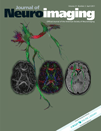Rosai-Dorfman Disease with Massive Intracranial Involvement: Asymmetric Response to Conservative Therapy
Conflict of Interest: The authors have no commercial interests to disclose. This submission has not previously been presented and is not elsewhere under consideration for publication. The authors have no conflicts of interest to disclose.
J Neuroimaging 2011;21:194-196.
ABSTRACT
Rosai-Dorfman Disease (RDD) is a rare, idiopathic lymphoproliferative disorder. Central nervous system (CNS) involvement in this disorder is an uncommon manifestation. The clinical and radiographic appearance of CNS RDD is variable, and may mimic more common diseases. Treatment is controversial, and spontaneous remission is common. Positive outcomes have been reported with radiation therapy, or corticosteroid administration, or surgical excision. Our case is unusual in that the extracranial sites of involvement responded to corticosteroid therapy while the intracranial masses progressed.




